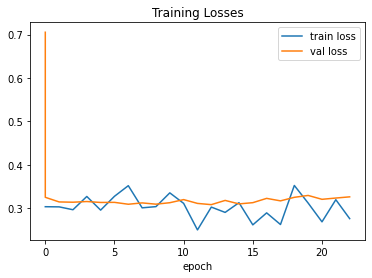US Census Classification#
What are we going to do?#
Note: This is a replication of the US Census Classification example using the Task Module.
In this quick demo, we will use JAI to:
Train and deploy models into a secure and scalable production-ready environment.
Complete a classification task - Predict whether household income exceeds $50K/yr based on census data
Importing libraries#
[1]:
from jai import Trainer
import pandas as pd
Dataset quick look#
This dataset contains data collected by the 1994 U.S. Census. It contains personal information such as education, marital status, occupation and sex and in this example we will use that data to predict whether an individual is making more or less that 50k dollars per year.
[2]:
df = pd.read_csv('https://myceliademo.blob.core.windows.net/census-us/adult.csv?sv=2020-04-08&st=2021-05-17T18%3A19%3A59Z&se=2025-01-18T18%3A19%3A00Z&sr=b&sp=r&sig=sH%2B2Za%2FTuXsatqgmRX3eG%2FQfZTh1M2ptMUi8NTXBXF4%3D')
df = df.reset_index().rename(columns={'index':'id'})
[3]:
# Show name of columns and non-null count
df.info()
<class 'pandas.core.frame.DataFrame'>
RangeIndex: 32561 entries, 0 to 32560
Data columns (total 16 columns):
# Column Non-Null Count Dtype
--- ------ -------------- -----
0 id 32561 non-null int64
1 age 32561 non-null int64
2 workclass 32561 non-null object
3 fnlwgt 32561 non-null int64
4 education 32561 non-null object
5 education.num 32561 non-null int64
6 marital.status 32561 non-null object
7 occupation 32561 non-null object
8 relationship 32561 non-null object
9 race 32561 non-null object
10 sex 32561 non-null object
11 capital.gain 32561 non-null int64
12 capital.loss 32561 non-null int64
13 hours.per.week 32561 non-null int64
14 native.country 32561 non-null object
15 income 32561 non-null object
dtypes: int64(7), object(9)
memory usage: 4.0+ MB
[4]:
# Show first 5 lines of dataframe
df.head()
[4]:
| id | age | workclass | fnlwgt | education | education.num | marital.status | occupation | relationship | race | sex | capital.gain | capital.loss | hours.per.week | native.country | income | |
|---|---|---|---|---|---|---|---|---|---|---|---|---|---|---|---|---|
| 0 | 0 | 90 | ? | 77053 | HS-grad | 9 | Widowed | ? | Not-in-family | White | Female | 0 | 4356 | 40 | United-States | <=50K |
| 1 | 1 | 82 | Private | 132870 | HS-grad | 9 | Widowed | Exec-managerial | Not-in-family | White | Female | 0 | 4356 | 18 | United-States | <=50K |
| 2 | 2 | 66 | ? | 186061 | Some-college | 10 | Widowed | ? | Unmarried | Black | Female | 0 | 4356 | 40 | United-States | <=50K |
| 3 | 3 | 54 | Private | 140359 | 7th-8th | 4 | Divorced | Machine-op-inspct | Unmarried | White | Female | 0 | 3900 | 40 | United-States | <=50K |
| 4 | 4 | 41 | Private | 264663 | Some-college | 10 | Separated | Prof-specialty | Own-child | White | Female | 0 | 3900 | 40 | United-States | <=50K |
Inserting data into Jai#
To be able to use Jai’s functionalities, we first need to turn the data into a Jai collection. In this example, we’ll use the Trainer module to send data to Jai. We’ll use the trainer.fit method to created the collection, which can then be consumed through the Query Module. By using the fit method you add your raw data to your JAI environment, use the data to train your model based on the chosen model type and your model’s latent vector representation is then stored in the Jai collection.
[5]:
trainer = Trainer(
# Name of Jai collection
name = 'census',
# verbose = 2 shows loss graph at the end of the setup
verbose = 2
)
trainer.set_parameters(
db_type = 'Supervised', # other options are: Text, FastText, TextEdit, Image, Supervised, Selfsupervised
# On supervised models we need to inform the label.
label = {'task':'classification', 'label_name':'income'}, # other options are: classification, metric_classification, regression, quantile_regression
split = {'type':'stratified', 'split_column':'income', 'test_size':0.1},
)
# When frequency_seconds >= 1, fit will return a Query object ready to consume the collection.
query = trainer.fit(
# data to be inserted into Jai - a pandas dataframe is expected
data = df,
overwrite = True
)
Recognized fit arguments:
- db_type: Supervised
- label:
* task : classification
* label_name: income
- split:
* type : stratified
* split_column: income
* test_size : 0.1
Insert Data: 100%|██████████| 2/2 [00:01<00:00, 1.16it/s]
Recognized fit arguments:
- db_type: Supervised
- label:
* task : classification
* label_name: income
- split:
* type : stratified
* split_column: income
* test_size : 0.1
JAI is working: 100%|██████████|22/22 [00:57]

Setup Report:
Metrics classification:
precision recall f1-score support
<=50K 0.89 0.92 0.91 2472
>50K 0.73 0.64 0.68 784
accuracy 0.85 3256
macro avg 0.81 0.78 0.79 3256
weighted avg 0.85 0.85 0.85 3256
Best model at epoch: 12 val_loss: 0.31
Model Inference#
We can use the trained model to make inferences on any specific index or in other added new data
[6]:
# It's also possible to get the same query object from fit as shown bellow:
from jai import Query
query = Query(name = 'census')
[7]:
df.tail(1).drop('income',axis = 1)
[7]:
| id | age | workclass | fnlwgt | education | education.num | marital.status | occupation | relationship | race | sex | capital.gain | capital.loss | hours.per.week | native.country | |
|---|---|---|---|---|---|---|---|---|---|---|---|---|---|---|---|
| 32560 | 32560 | 22 | Private | 201490 | HS-grad | 9 | Never-married | Adm-clerical | Own-child | White | Male | 0 | 0 | 20 | United-States |
[8]:
query.predict(
data = df.tail(1).drop('income',axis = 1),
# predict_proba = True shows the probability that the item belongs to each class
predict_proba = True)
Predict: 100%|██████████| 1/1 [00:00<00:00, 2.47it/s]
[8]:
[{'id': 32560,
'predict': {'<=50K': 0.9999680519104004, '>50K': 3.19505634251982e-05}}]
[9]:
query.predict(
data = df.head().drop('income',axis = 1),
# predict_proba = True shows the probability that the item belongs to each class
predict_proba = True)
Predict: 100%|██████████| 1/1 [00:00<00:00, 2.45it/s]
[9]:
[{'id': 0,
'predict': {'<=50K': 0.8733702898025513, '>50K': 0.12662969529628754}},
{'id': 1,
'predict': {'<=50K': 0.7550706267356873, '>50K': 0.24492938816547394}},
{'id': 2,
'predict': {'<=50K': 0.6213910579681396, '>50K': 0.37860894203186035}},
{'id': 3,
'predict': {'<=50K': 0.9679034352302551, '>50K': 0.03209662809967995}},
{'id': 4,
'predict': {'<=50K': 0.5875391364097595, '>50K': 0.4124608337879181}}]
